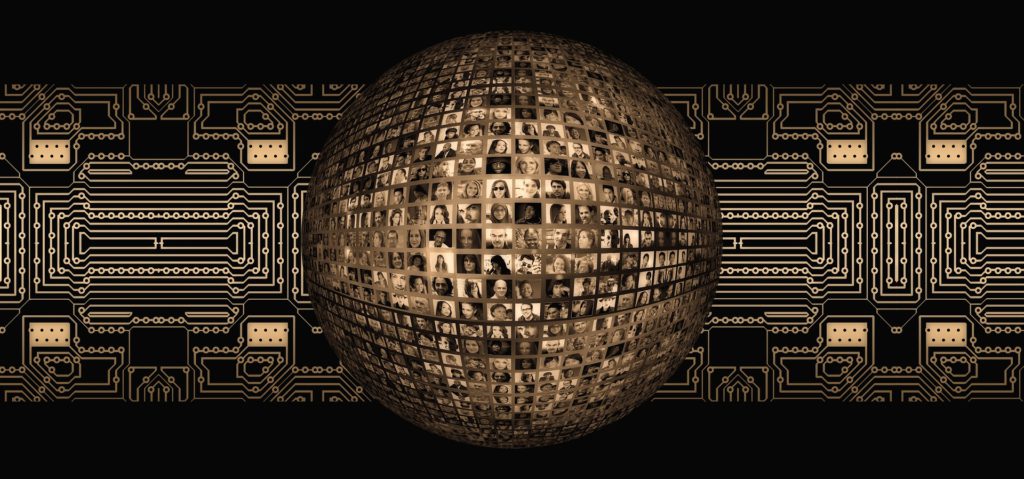Deception
Omnipresent in our lives, relationships and businesses
Hidden Emotions
Why we Lie
Three Types of Lies
Chances that you have been lied to today
Before You Go Down This Rabbit Hole
How good are professionals in lie detection? Enter your estimation from zero to 100%.
Valid & Invalid cues
Researchers around the globe have discovered a seemingly universal and cross-cultural belief in the relationship of specific non-verbal behaviours to deception. Many of these specific behaviours have been investigated in real life and sometimes high-stakes situations but have shown no correlation to deception.

Irrespective of the country, most people associate deception with an increase of gaze aversion; self-touches, especially in the face, mouth and nose; frequent movements of the trunk; shifting positions; many hand, arm, leg and foot movements; and general expressions of anxiety. Liars are assumed to be nervous, and any signals supporting this assumption are taken as signs of deception.
In reality, it turns out that liars, quite aware of these assumptions, do the opposite and restrict their movements, sometimes down to an unusual degree of rigidity and inhibition, so as to not appear suspicious. This means that most naïve observers not only look for non-verbal signals that science tells us have no relation to deception but also incorrectly believe that the frequency of these behaviours increases with lying.

While non-verbal signals can’t tell us with certainty if someone is lying, they can indicate cognitive load. Cognitive load can have multiple causes, and deception is certainly one of them. Speech disturbances (ahs and ohs), a higher-pitched voice, slower speech rate, longer latency period, a decrease of bodily movements and eye blink rates all are valid indicators of cognitive load. This form of mental overload is happening when someone is in a stressful situation and has to perform some intellectually challenging tasks.
A liar has to monitor his demeanour and body language, his story has to be consistent, he has to keep track of all the little details of his deceptions so as to not contradict himself later when questioned and he has to monitor and anticipate the doubts and emotions of his targets to verify if he is being believed. This explains why most people are reluctant to lie outright but revert to lying by omission and paltering.
Chances that YOU have lied today
Charts of Deception
People tend to be reasonably honest in their Resumes
One time a liar always a liar?
75% of all surveyed Men and Women admitted to lying, but who does it more often?
People lie on dating sites, but only within reason
92% of People admit having lied to a romantic partner
Spotting a lie is for most people like flipping a coin
Chances that you can spot a lie
Deception Detection
Genuine deception detection separated from myth, fiction, false beliefs, bias and overconfidence offers a number of techniques to the serious analyst. Performing a credibility analysis with the combined strength of these tools can produce highly accurate results.
 One of the most prominent areas of investigation is the face, as not all of its 43 facial muscles are under voluntary control. This means that if you cannot activate a certain muscle or combination of muscles voluntarily, then you will not be able to inhibit their activation when you are under the influence of strong emotions. One example is the expression of sadness, where the inner corners of the eyebrows are pulled up and the mouth corners are depressed. Only 10% of the population can mimic this expression with a certain degree of authenticity, which is why we call the involved muscles reliable muscles.
One of the most prominent areas of investigation is the face, as not all of its 43 facial muscles are under voluntary control. This means that if you cannot activate a certain muscle or combination of muscles voluntarily, then you will not be able to inhibit their activation when you are under the influence of strong emotions. One example is the expression of sadness, where the inner corners of the eyebrows are pulled up and the mouth corners are depressed. Only 10% of the population can mimic this expression with a certain degree of authenticity, which is why we call the involved muscles reliable muscles.  These reliable muscles can point to incongruences between what is said and what is felt but are by themselves not definitive proof of lying.
These reliable muscles can point to incongruences between what is said and what is felt but are by themselves not definitive proof of lying.
The observation of body language is another tool that can be used to determine what a person may be thinking or feeling, especially if regarded through the lens of evolutionary psychology. We turn our torsos and feet towards things and persons we like, and we keep distance from (proxemics) and turn away from things or persons we dislike or fear. We use conspicuous consumption as sexual signalling, to compete with our rivals for resources and mates, and we mimic fertility signals to succeed or remain in the dating market. All of this is hidden in plain sight for those who know what to look for.

Analysing the verbal content of spoken or written statements can lead to unexpected insights, and there are several techniques to do so: scientific content analysis, statement analysis and criteria base content analysis to name just a few. They all have in common that they take as true exactly what is said or written, even if it is known that the statement is a lie. This counter-intuitive method makes use of the fact that liars must adhere to the grammatical rules of the language they use and often overlook aspects of speech that evade conscious processing. Here is an example from a real police investigation where one word revealed the deception: “two men approached me from behind, put something over my head and threw me into the van.” Did you spot it? The subject used the definite article “the” van, and in doing so indicated that the van was known to her before the incident. If that were not the case she would have used the indefinite article “a” van. She later confessed that she had made up the story to conceal the fact that she had skipped work to party with her boyfriend, and the van was indeed her boyfriend’s van.
Psychophysiology and especially the voice are additional channels open for analysis, and they complement the techniques described above, but the observation of the face, body and the words will go a long way in determining the congruence and veracity of what someone is saying.
Age and the Frequency of Lying
The ability and willingness to lie seem to increase throughout childhood, reaching their peak in early adulthood and then declining gradually into old age.
Identify Hidden Emotions
It’s not the Lies that we are looking for, it’s the truth leaking through and hidden Emotions are often the give away. How well can you spot them?
Genuine Smile
Sadness & Anger
Insincere Smile & Contempt
Fake Smile
Disgust masked with a Smile
Concealed Anger
Chances that you spot a lie better coming from someone you know well

Beyond the Myth
The reason why non-verbal communication is not a reliable indicator of deception lies in the simple fact that all of us display anxiety, nervousness or similar behaviour patterns in certain situations, even if we are completely truthful. Nevertheless, non-verbal signals can point us toward a mismatch between what is said and what is really felt. If Ben claims to be happy to see you but displays subtle signs of sadness (or anger), does this make Ben a liar? How can we know what Ben is sad or angry about? We cannot. We can only conclude that someone or something has left an emotional residue which Ben does not want to display or of which he is not even consciously aware.
The face and the body can provide those who know what to look for with valuable insight into what a person is really feeling or thinking—but don’t jeopardize your relations with hasty conclusions.
Chances that you succumb to truth bias in a close relationship
Where do we lie the most?
Telephone – Face to Face – Email – Social Media – CV’s – Dating Sites
The Truth Bias
Most humans are hardwired to believe in the truth because it was in our species’ evolutionary interest and advantage to do so. Social scientists call this the truth bias. Well established social conversation rules reflect this behaviour by preventing people from questioning everything that is said, and any society whose foundations are not based on trust would not be able to function (think commerce).
The truth bias becomes especially pronounced in intimate and prolonged relationships. Contrary to what most people think, the longer you know someone the more likely you are to fall victim to the truth bias and the less likely you are to detect deceit. Your subconscious mind is primed to assume that what your spouse, partner, son, daughter or friend is telling you is true despite sometimes glaringly obvious signs that could have told you otherwise.
Depending on the context and form of communication, another variation of the truth bias can come into play. Elaborative statements that are internally consistent, contain the right amount of details and sound plausible are generally perceived as truthful, resulting in truth bias. This explains why most people are better at detecting truth than at detecting lies. Skilful liars take advantage of this fact and provide such high-quality and extensive statements. In doing so they often succeed without arousing suspicions thanks to the truth bias, and their lies are incorrectly taken as truth.
Denials, truthful or not, are often much shorter than elaborations (I didn’t do it). Here lie detectors cannot draw on the general quality of the statement; instead, what is looked at instinctively is the demeanour of the target person, which is problematic for two reasons. First, we know that most people are looking erroneously for non-verbal signals that are unrelated to deception. Second, people who look for non-verbal signals have been shown to be more likely to judge someone as deceptive. Social scientists call this the lie bias.
Next time you doubt the veracity of a statement, keep in mind that if someone tells you an elaborate story, and especially if this person is someone you know well, you are likely to judge the statement as truthful. If on the other hand someone simply denies a certain fact with few words, and especially if you don’t know that person well, you are likely to judge the denial as deceitful. This knowledge and the awareness of your own biases will help you to increase your deception detection accuracy.
Three Different Types of Lies
Lies by Commission
Lies by Commisison
Paltering
Paltering
Lies by Omission
Lies by Omission

The Professionals
Police officers, detectives, judges, FBI agents, customs officers and other professional lie catchers are as unimpressive as the general population when it comes to lie detection. Their years of experience can lead to overconfidence in their ability to distinguish truth from deception, an overconfidence that bears no relation to the actual deception detection accuracy.
Researchers from several countries have pointed out that officers from multiple law enforcement agencies correctly identify 67% of truthful statements but only 44% of deceptive statements—which is below the level of chance in flipping a coin.
There are a number of reasons for this disappointing result, but overconfidence, bias, stereotypical views about liars and the acceptance of non-verbal signals that have no relation to deception are the main contributors. Thus, it appears that neither work experience nor confidence relate to the actual success rate when it comes to lie detection.
False Prophets
In countless books, workshops and television series, eye gaze aversion, mouth twitching, nervousness and fidgeting, nose scratching or face touching are sold to an eager audience in search of the truth serum. But frequent repetition does not make something true. More than half a century of research has failed to produce a single universal sign of deception. The evidence is clear: Pinocchio’s nose does not exist, and there are no non-verbal signals that can reliably and consistently be used to identify deception. In fact, if someone tells you that he/she can teach you to spot lies with these signals, well, then you probably have been lied to.

